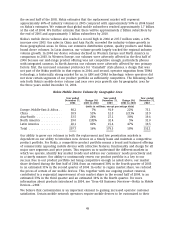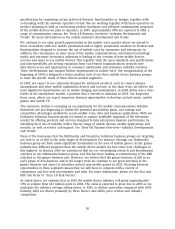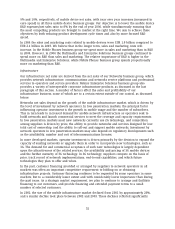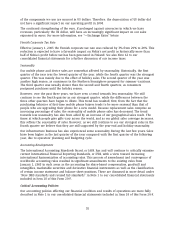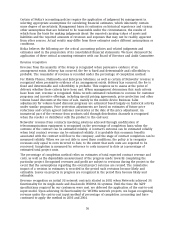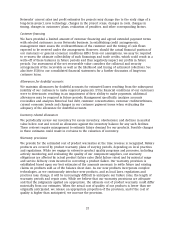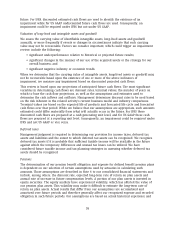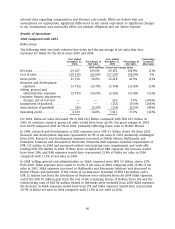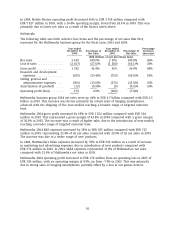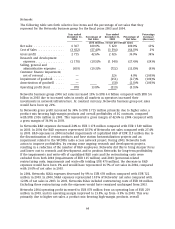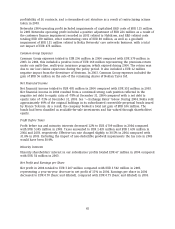Nokia 2004 Annual Report Download - page 56
Download and view the complete annual report
Please find page 56 of the 2004 Nokia annual report below. You can navigate through the pages in the report by either clicking on the pages listed below, or by using the keyword search tool below to find specific information within the annual report.of the components we use are sourced in US dollars. Therefore, the depreciation of US dollar did
not have a significant impact on our operating profit in 2004.
The continued strengthening of the euro, if prolonged against currencies in which we have
revenues, particularly the US dollar, will have an increasingly significant impact on our sales
expressed in euros. For more information, see ‘‘—Exchange Rates’’ below.
Finnish Corporate Tax Rate
Effective January 1, 2005 the Finnish corporate tax rate was reduced by 3% from 29% to 26%. This
reduction is expected to have a favorable impact on Nokia’s net profit as historically more than
half of Nokia’s profit before tax has been generated in Finland. See also Note 12 to our
consolidated financial statements for a further discussion of our income taxes.
Seasonality
Our mobile phone and device sales are somewhat affected by seasonality. Historically, the first
quarter of the year was the lowest quarter of the year, while the fourth quarter was the strongest
quarter. This was mainly due to the effect of holiday sales. The second quarter of the year was
another high season, as consumers in the Northern Hemisphere prepared for summer vacations.
The third quarter was usually slower than the second and fourth quarters, as consumers
postponed purchases until the holiday season.
However, over the past three years, we have seen a trend towards less seasonality. We still
continue to see the fourth quarter as our strongest quarter, while the differences between the
three other quarters have begun to dilute. This trend has resulted, first, from the fact that the
purchasing behavior of first-time mobile phone buyers tends to be more seasonal than that of
people who are upgrading their phone for a new model. Because replacement sales comprise an
increasing percentage of sales, the seasonality of mobile phone sales has decreased. The trend
towards less seasonality has also been aided by an increase of our geographical sales reach. The
times at which people give gifts vary across the world, and as our global sales coverage increases,
this softens the seasonality of sales. However, as we still continue to see our strongest sales in the
fourth quarter we believe that they are still supported by the year-end and holiday seasonality.
Our infrastructure business has also experienced some seasonality during the last few years. Sales
have been higher in the last quarter of the year compared with the first quarter of the following
year, due to operators’ planning and budgeting cycle.
Accounting developments
The International Accounting Standards Board, or IASB, has and will continue to critically examine
current International Financial Reporting Standards, or IFRS, with a view toward increasing
international harmonization of accounting rules. This process of amendment and convergence of
worldwide accounting rules resulted in significant amendments to the existing rules from
January 1, 2005 in such areas as the accounting for share-based compensation, goodwill and
intangibles, marketable securities and derivative financial instruments as well as the classification
of certain income statement and balance sheet positions. These are discussed in more detail under
‘‘New IFRS standards and revised IAS standards’’ in Note 1 to our consolidated financial statements
included in Item 18 of this Form 20-F.
Critical Accounting Policies
Our accounting policies affecting our financial condition and results of operations are more fully
described in Note 1 to our consolidated financial statements included in Item 18 of this Form 20-F.
55






